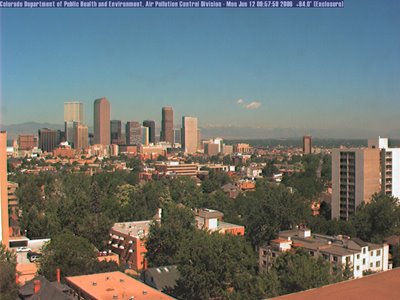Problems with Flares
Flares are often used to control volatile organic compound (VOC) emissions from natural gas processing plants and other oil and gas facilities in the Denver area. The flares, which are nothing more than a giant flame, burn off the VOCs, which would otherwise react with sunlight to create ozone pollution.
Unfortunately, flares don't always work. The Colorado Air Pollution Control Division assumes flares automatically control VOC emissions below permitted limits. For example, the state often assumes flares will reduce VOC emissions by 95% or more. These assumptions are totally baseless.
Flares are susceptible to crosswinds and, if poorly operated and maintained, won't burn off VOCs like they're supposed to. An inefficient flare spews black smoke, whereas an effective flare has no visible emissions. The state never takes into consideration crosswinds or poor operation and maintenance, meaning that many flares often spew black smoke.
A study done in the Houston area, which has also suffered from ozone pollution, reported that actual VOC emissions from flares are way underestimated due to these factors. The study states:
"The Houston area’s very high ozone levels are heavily impacted by emissions from refinery and petrochemical plant flares. A significant factor contributing to this situation is Texas regulations for permitting and monitoring of flares that are based on inappropriate assumptions for combustion efficiency and are not adequately enforced."
Rocky Mountain Clean Air Action has questioned the state's flare efficiency assumptions in comments on permits for gas processing plants in the Denver area. The state always asserts their assumptions are valid. The problem is they have no monitoring data from any of these plants showing that flares always achieve the required VOC reductions.
Colorado's baseless flare efficiency assumptions likely means that VOC emissions are way underestimated, just like in the Houston area. The result is that VOCs from flares are yet another source of overlooked ozone pollution in the Denver metro area.


